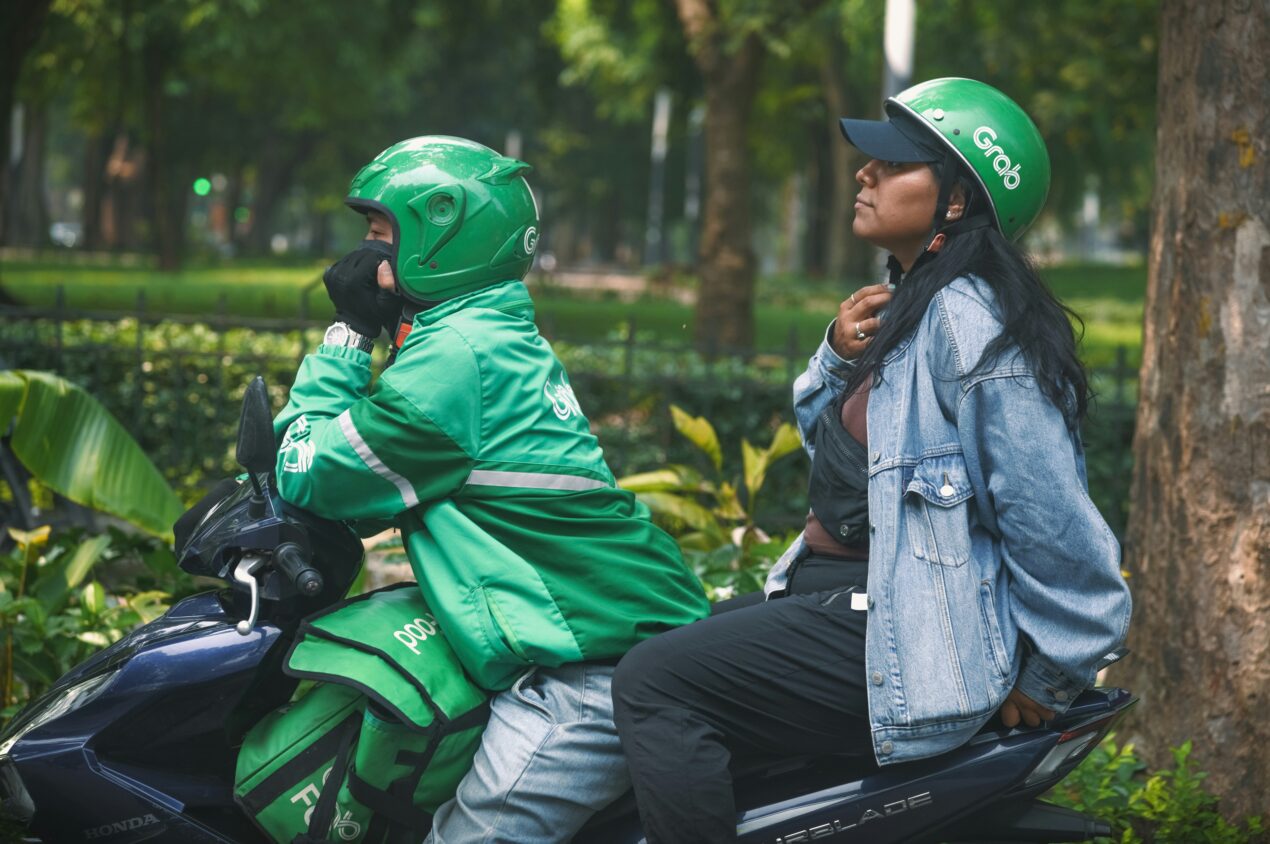Is There Uber in Vietnam? This Other Ride-Hailing App Puts Uber to Shame
Vietnam isn’t what I would consider to be a destination for first-time travelers. It can be chaotic, loud, raw, unpredictable, and in your face. But that’s also why it’s addictive and one of my absolute favorite places. Once you prepare yourself to mentally and physically feel vulnerable, step outside of your comfort zone, and keep an open mind, there’s undoubtedly an enchanting character, environment, and depth that can be found in every pocket of the country, making it surprisingly more sustainable and comfortable than you might have first imagined.
Having spent over one year living in Ho Chi Minh City (aka Saigon), Vietnam, with regular month-long stints mixed into my yearly travels in subsequent years, I was one of the biggest ride-hailing app proponents in the country. It’s part and parcel of everyday life in Vietnam, for both locals and foreigners and you’d be hard-pressed to find someone who hasn’t used the country’s most popular ride-hailing and delivery service at least once.
However, if you think I’m talking about Uber, you’d be completely wrong. Uber is not available in Vietnam. Instead, almost 50% of the Vietnamese population uses the Southeast Asia-based ride-hailing service ‘Grab’ to get from Point A to Point B. I assure you, it puts Uber to shame with how comprehensive, affordable, and convenient it is.
Since Uber’s exit from the Southeast Asian market in 2018, Grab has overwhelmingly snagged the top spot as the region’s top ride-hailing app and service. It is a ‘one-stop-shop’ for everything you could want – from convenient and affordable transport to food delivery services, insurance and financial services, and even the ability to send packages and documents. I refer to it as a ‘super app’. In fact, most of Southeast Asia uses this app, so if you’re planning on making a trip, this is a must-download on your phone.
Here is everything you need to know about using ride-hailing services in Vietnam, alternative transportation methods available, and key scams and safety considerations to keep in mind when navigating this incredible country.
Pale Ale Travel Note: Don’t forget to check out my entire archive of Vietnam content here.
Why Uber is No Longer in Vietnam
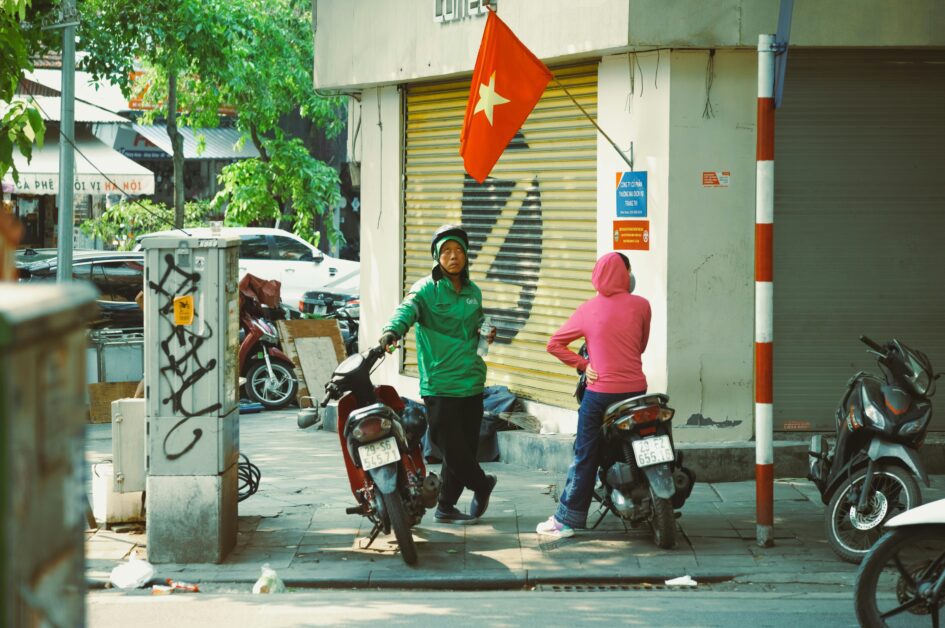
I’ll keep this section brief, as I already mentioned above that there is no Uber in Vietnam. There is no Lyft as well. Instead, Grab is the dominant ride-hailing app and service used in Vietnam. All day, every day.
But why would there be when you have one of the ultimate ‘super apps’ of our time to take its place?
The ‘Mighty Uber’ may have fully permeated the North American market and carved out an unimpeachable share but that wasn’t the case for Vietnam and Southeast Asia.
Uber’s Exit From Southeast Asia
Simply put, Uber’s withdrawal from Vietnam was part of a broader strategic ‘retreat’ from Southeast Asia as a whole in 2018. This involved Uber selling its regional operations to the Singapore-originated ride-hailing app Grab in exchange for a nearly 30% stake in the company.
But what were the reasons for this withdrawal and did they leave with their tail between their legs?
At its core, intense competition along with the high costs of expansion in Southeast Asia were the driving forces behind Uber’s withdrawal. Grab, an already established local leader, with significant financial backing, leveraged a localized and regional understanding of its users – doing so via targeted promotional campaigns and localized offerings like motorcycle taxis and digital payments.
Further, regulatory uncertainty and changes complicated Uber’s chances of gaining a stronghold in the region. For example, Vietnam, like most Southeast Asian countries, required Uber to navigate unique (and complex) regulations governing foreign companies and internal transportation services, such as adhering to strict levels of foreign ownership and specific vehicle licensing requirements.
Pale Ale Travel Note: One thing that I find deeply fascinating about the use of a digital ride-hailing app in Vietnam is that cash still reigns supreme, with the bulk of transactions initiated on the platform/app ultimately being settled in cold hard cash. Grab’s early integration of cash payments in the app was also another driving factor behind gaining local consumer trust, confidence, and favor.
Uber’s partnership with Grab was, however, strategic, and a practical way to reduce its global expenses while still benefiting from the region’s growth via its vested stake in Grab.
From my understanding, it boils down to a company that was started in Southeast Asia understanding its Southeast Asian customers and their needs, along with its regulatory landscape, better than a foreign-originated company.
Does Uber Eats Still Exist in Vietnam?
With Uber’s withdrawal from the region and execution of a partnership with Grab, all service offerings left as well – such as Uber Eats. This makes sense. Without Uber’s ride-hailing services in operation, Uber Eats also does not exist in Vietnam.
As I noted above, Grab is all-encompassing and also boasts its own delivery service function within the app – GrabFood. As of 2022, GrabFood has acquired a sizable share of the food delivery market in Vietnam, accounting for nearly 50% of all online food deliveries. However, ShopeeFood isn’t too far off, taking home an estimated 40% of the market.
Between these two localized offerings, it’s no wonder why Uber Eats (and Uber) just didn’t cut it in the region.
I put this to work far more than I should have. But sometimes, you simply don’t want to put on pants and go out the door to sit and eat at a restaurant.
Grab: Vietnam’s Leading Ride-Hailing Service
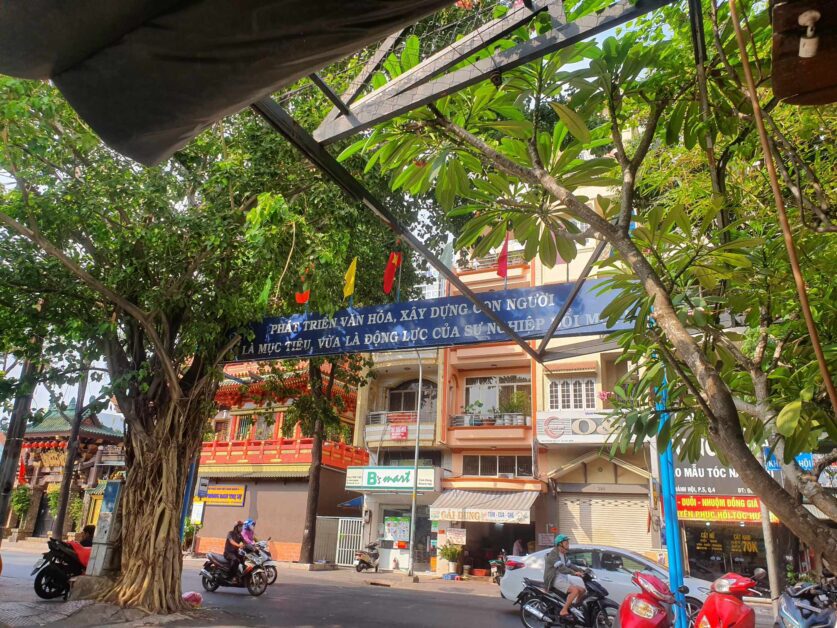
Coming from the U.S. and as someone who is currently based in Hong Kong, Uber has always been one of my most-used apps, so it caught me slightly off guard when I first moved to Vietnam and was told that Grab was an essential app that would be on the home screen of my phone.
After taking the literal 15 minutes it takes to download and install the app, I was up and running and actually booked my first ride from the Tan Son Nhat International Airport directly into Ho Chi Minh City’s central district (District 1).
Rest assured, almost every single ride-hailing app and service has a similar, intuitive, easy-to-navigate interface. So, I would confidently say that if you have used Uber or another popular ride-hailing app like Bolt, then you will be more than fine booking a ride or food delivery via Grab.
Check out Grab’s website or download the app via Google Play, AppGallery, or the App Store (Apple). Look for the app with millions of downloads. You found it!
Grab’s Services & Key Features
Grab’s fleet of motor vehicles includes everything from sedans and SUVs to motorbikes and taxis. My two most commonly used ride services in Vietnam are
- GrabCar, and
- GrabBike.
For reference, I almost always use GrabCar if I need to travel somewhere (a) with my backpack, (b) a considerable distance away, or (c) if I just simply want my own space and air conditioning, while I use GrabBike (a) if I need to be somewhere ASAP, (b) on major holidays and during key events in Vietnam when the roads are blocked or packed, and (c) if I’m feeling a little bit adventurous and want the night’s warm air blowing on my face.
So, while Uber does not operate in Vietnam, you will never be without affordable, convenient, and diverse options to travel around the country. Keep in mind that Grab primarily operates in all major cities across Vietnam, including Ho Chi Minh, Hanoi, Da Nang, Da Lat, Nha Trang, and Vung Tau.
You can find the complete list of all cities and areas Grab operates in Vietnam here.
Hopping on the back of a GrabBike can be a bit nerve-wracking at first but after your first or second trip, it’s all gravy from there. I do have to emphasize for anyone concerned about safety, motorbikes in Vietnam may leave something to be desired. It’s not exactly like hopping in a Tesla Cybertruck. Accidents do happen and I can confidently state that Vietnam is far more relaxed than Western countries when it comes to obeying basic traffic rules, regulations, and safety.
A local woman I went out with for several months had scars across her legs from several accidents she had been in, yet I’d still see her rip through a red light and intersection with zero regard for what might be coming her way. It’s cultural. If you want to cross your t’s in the safety department, I almost always recommend hailing a GrabCar.
Grab’s Additional Non-Transportation Services
Not only can you hail a car or motorbike via the Grab app in Vietnam but you can also rent a car at competitive rates and flexible pricing as well.
On top of ride-hailing services, Grab in Vietnam (and Southeast Asia) has numerous components that may come in use for your trip (or move), including:
- GrabMart: essential foods and supplies delivered to you from local nearby supermarkets;
- GrabExpress: lightning-fast shipping services for parcels and small packages within cities at the touch of a button;
- Grab Insurance: to compensate riders or drivers involved in a GrabBike or GrabCar incident (this can provide you with peace of mind on your cross-country trip or as a safeguard in case anything goes wrong);
- Other Grab Financial Services: pay for bills, online products or other goods (ex. electronics), hotels, and more.
One thing that’s unique to Grab and actually became a little bit of a competition between my best buddy and me was how much we could earn via its rewards and loyalty system. However, I believe that the system has changed from my time in Vietnam and you can now only earn loyalty points if you are a GrabUnlimited user. This only costs 25,000 VND/month (USD 1/month), which is more than worth the investment if you order a ton of delivery like me.
Once you begin earning, you can apply your rewards points to discounts on Grab rides, food delivery services, and other products and services available on the app.
Payment Methods & Options
As emphasized above, Vietnam is a cash-driven economy and society. So, while Grab is a mobile app, cash still reigns supreme. However, it’s nice to have several options, especially when you’re often too lazy to hit the ATM like me.
The entire scope of Grab’s payment options and multi-payment model include:
- Cash: This is still the most popular payment method. Oftentimes, it’s normal to round up to the largest denomination and have the rider keep the change (if we are talking about several thousand VND).
- Credit & Debit Cards: Users can link their credit or debit cards to the app. Accepted cards include Visa, Mastercard, American Express, and even Apple Pay. The beauty of setting this up is you can also switch over to ‘Cash’ payments on the app if necessary. Not to mention the credit card points you can earn (on top of Grab rewards).
- Digital Wallet: Grab offers its own GrabPay wallet thanks to its partnership with e-wallets. This allows users to seamlessly make cashless payments for rides, food deliveries, and other services. This payment feature is likely the least common among tourists and those staying in Vietnam for a short period.
One important note I’d like to make is that I would be hesitant to link your credit card if you’re only taking a short trip to Vietnam. One of my best buddies, who lived in Vietnam during the same year that I did, linked his and semi-frequently ran into an issue where Grab drivers would accept a ride/get connected and then just would never show up – hoping that you would cancel and then they could receive a cancellation fee.
Or, when ordering food delivery, the rider would mark the food as delivered yet my buddy had never received it. He spent an exorbitant amount of time messaging Grab support about incidents like this to receive refunds.
When using cash, I rarely encountered this issue, considering the driver literally has to pick you up or hand you your food order to receive payment.
Grab vs. Taxis in Vietnam: Which Should You Use?
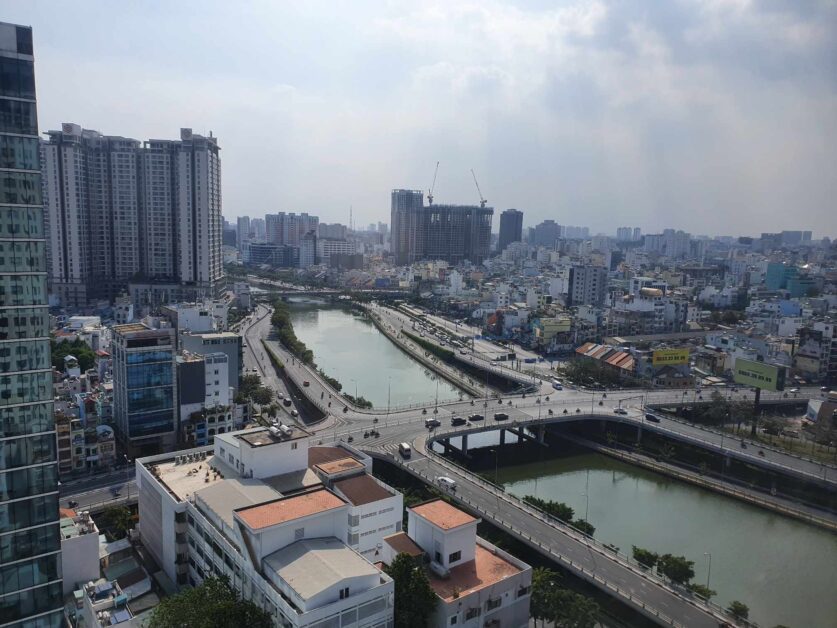
A major question I receive from readers when landing in a new country is whether they should use a ride-hailing app like Grab or local taxis. I always take a diplomatic stance and say, “Why not both?”
Justin Bieber said it best, “Never say never.” Whether you should take a taxi or use Grab in Vietnam can be attributed to several factors such as (a) convenience, (b) cost, and (c) safety.
Having used both taxis and Grab extensively in Vietnam, here are several reasons why I generally use the former to get around (along with the few situations I hail taxis) so that you can make the best choice based on your needs.
Pros of Using Grab Over Traditional Taxis in Vietnam
As I see it, Grab boasts several distinct advantages over traditional taxis in Vietnam, such as:
Transparent & Predictable Pricing
Look, Vietnam is a developing country and there are occasional hustles and/or scams that you have to look out for when traveling inside the country. One of the biggest issues for tourists and travelers is being ripped off by taxi drivers.
Grab provides clear, upfront pricing on its app, which can eliminate misunderstandings, communication issues, and disputes over fares. You can also choose the best and most appropriate form of transportation for your budget.
Ease of Use & Availability
With Grab, you can book a ride directly from your smartphone, without the need to hail a taxi on the street.
This especially comes in handy in unfamiliar areas or in places where taxis are not readily available.
Both Cash & Digital Payment Options
If you want to avoid carrying cash, simply link your credit card to the app and avoid stressing about fumbling for payment and/or giving the driver the wrong bill/receiving the incorrect change.
GPS Tracking & Safety Features
Grab, like Uber, includes real-time GPS tracking, requires driver verification authentication and verification, and boasts 24/7 emergency support assistance, all of which ultimately enhance rider safety and reliability. Grab’s rating system for drivers may also contribute to them being suspended or removed from the platform.
An important point to note is that both the 20,000 VND bill and the 500,000 VND bill are blue, which I first confused in my early days in Vietnam. Using Grab to get around helps cut down on the chances of accidentally paying with a bill 25 times more valuable!
I strongly recommend also acquainting yourself with the difference between the two before your trip as it could mean the difference between a day or two’s worth of dinner (should you give someone the wrong note!).
The biggest differences between the two is that the 20,000 VND note is smaller than the 500,000 VND and also features an image of a pagoda, while the 500,000 VND note is more of a blue-green hue and features an image of a village.
Read more about it in this article by BMTravel, who really dig into the nitty-gritty of what to look for.
Pale Ale Travel: Don’t forget to check out my comprehensive breakdown of the top pros and cons of living in Ho Chi Minh City as an expat!
Common Vietnam Taxi Scams to Know
While the majority of taxi drivers in Vietnam (same as most places in the world) are honest, reliable, and hardworking, you may encounter the occasional outlier.
Should you hail a taxi, keep these common scams in the back of your mind to better protect yourself! In fact, keep these tips in mind when hailing a taxi anywhere in the world.
- Overcharging & Meter Tampering: It’s not uncommon for taxis to take a longer route to overcharge tourists who are unfamiliar with the most direct path or use tampered meters that drastically increase in price – both resulting in inflated bills.
- Quick-Change Scams: I’ve personally fallen victim to this. It typically occurs when a driver claims you handed them an incorrect bill, when in fact you gave them the right one, followed by them swapping out your correct bill for a smaller denomination bill or even a fake one. They then pocket the difference. To avoid this, I take a picture of my largest denomination bills and their serial numbers and I also announce exactly how much I’m handing the driver as I go to pay.
- Fake Taxis: Commonly referred to as ‘black taxis’, these are unlicensed vehicles that often sport similar or identical names and logos to popular, legal taxi services in the country (ex. Such as Mai Linh or Vinasun). As suspected, they don’t charge honestly. For the untrained eye, it can be difficult to differentiate between real and fake taxis.
This post by InnoViet provides a fantastic, comprehensive breakdown of key taxi scams in the country and how to identify them – it does a far better job than I would about the key features of real and fake taxis!
A general rule of thumb I have is when taking a taxi, I will always go to a designated taxi stand and look for taxi company representatives who will hail a cab for me.
In cases where there are no designated taxi stands to be found, avoid going with anyone who actively solicits you, always check for a meter, keep an eye out for the signature white collared shirt with red (Vinasun) and green ties (Mai Linh), and trust your gut. If something feels off, it probably is!
Which Do I Typically Use While in Vietnam?
In my combined one year and three months in Vietnam (and many more months and hopefully years to come), I’d estimate I’ve used Grab 90% and taxis 10% of the time when traveling from one destination to the other.
My general rule of thumb: use Grab unless you’re left with no other options and available cars and/or bikes.
Grab is my default method of transportation and I typically only use taxis in two key situations:
- When my building security guard or management hail one for me (many apartment complexes have designated taxi stands), and
- When it’s late at night and there’s a lack of available Grab cars.
In those late-night situations, I aim to walk to a major taxi stand and hop in from there. I’ve clocked 2-3 major points around Ho Chi Minh City where I know there are taxi stands.
This is not me saying I’m against taxis in Vietnam. Grab is so prevalent that it’s typically more convenient and straightforward to click one or two buttons on my phone.
Alternative Ride-Hailing & Transportation Options in Vietnam
Unfortunately, Vietnam is not one of the better countries I’ve visited when it comes to public transportation.
I mean, the Ho Chi Minh City metro has been something like 20 years in the making. Thanks to corruption, bureaucracy, and inefficiency, there’s still nothing.
I do not doubt that’s a major reason why Grab and motorbike culture is ubiquitous in Vietnam.
However, there are still a handful of formidable options to navigate Vietnam.
Less Popular Ride-Hailing Apps
In addition to Grab, there are several less popular ride-hailing apps that you can always install as a safeguard against a lack of available vehicles on Grab.
Keep in mind that all of the below apps may not have as robust English language support, payment options, and utility as Grab.
- Gojek: Having rebranded from GoViet in 2020, Gojek is a popular, reliable alternative for tourists in Vietnam. This Indonesian ride-hailing app and service is one of the biggest in all of Asia (170 million users) and would be my recommendation for installing as your ‘Number 2’ to Grab. Expect a comprehensive English interface, cash and international credit card payments, and a stellar reputation.
- Be: Founded in 2018, Be is relatively new in the ride-hailing ecosystem of Vietnam and is generally recommended for true budget travelers thanks to offering very cheap rides – especially for motorbike rides. Unfortunately, the car fleet and English support are not as comprehensive as Grab, and the overall quality of vehicles may vary greatly depending on individual drivers. This may be a smoother choice for those who have at least some sort of (minimum) Vietnamese language proficiency.
- Xanh SM: The newest of the three apps mentioned, Xanh SM is the ‘eco-friendly’ EV ride-hailing option for those who want to lower their carbon footprint. The only issue is that it is still in its infancy and may not have a widely available fleet of cars and is only in a select few cities (ex. Ho Chi Minh City and Hanoi). It does, however, boast an English interface and offers both cash and credit card payments (only those issued in Vietnam though!).
I can only speak to using Gojek on occasion and vouch for its efficiency and reliability but if you do end up giving any of the other two apps a try, please let me know in the comments or by sending me an email!
Traditional Transportation Modes
In addition to taxis as a ‘traditional transportation mode’ in Vietnam, using one of the following types of transport may be a unique and memorable experience. These include:
Rent a Motorbike
A beloved pastime of tourists in Vietnam is renting their very own motorbike to get around and explore. This can be done for as little as several dollars per day. Also, many rental shops don’t check if riders possess a valid license (which I am not endorsing).
The chances of being involved in an accident exponentially increase and it isn’t uncommon for police to target and pull over foreigners to request bribes.
Buses
Major cities in Vietnam have extensive bus networks that are extremely affordable and relatively reliable. They may be somewhat difficult to navigate though due to route maps and schedules being posted in Vietnamese. Furthermore, buses can get very crowded which may not be the most comfortable.
But it is an authentically local experience! If you do take the bus in Vietnam, consider downloading ‘BusMap’, a growing transportation app that provides English support for bus routes, real-time tracking, and more.
Cyclos
Invented by a Frenchman in 1939, cyclos are traditional three-wheeled vehicles that you can still find in major tourist areas of Vietnam. They can provide a nice slow, scenic way to explore the city. However, they are generally more expensive than all aforementioned methods of transport.
Luxury Vans & Limousines
For travel of up to several hours, it’s worth shelling out a little extra money (especially if friends) and booking a seat on one of the luxury limousines or vans. In reality, the term limousine makes it sound fancier than it is. It is just a nicer, smaller, spacious bus with air conditioning.
I did this for a short trip to Vung Tau from Ho Chi Minh City, which cut down travel time by roughly half.
Pale Ale Travel Tip: If you’re swinging over to Thailand, make sure to check out my post tackling the same subject – ‘Is There Uber in Thailand?’. I also walk through several of my favorite alternative modes of transportation in the Land of a Thousand Smiles (i.e. the tuk-tuk!).
Big Body’s Final Thoughts on Using Grab in Vietnam
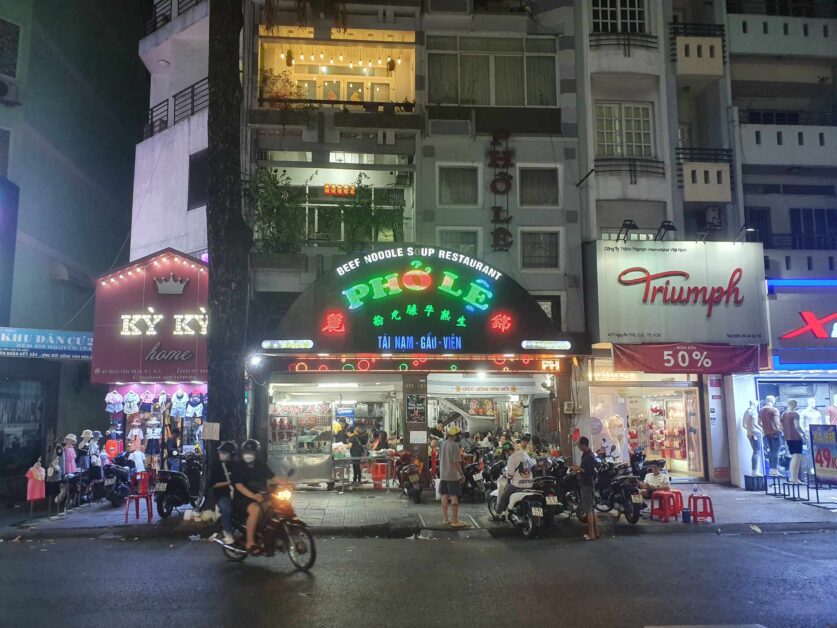
While Vietnam can feel rough around the edges when you first touch down, once tick off crossing from one side of the road to the other for the first time (it can be absolutely terrifying!), slug a few delicious Vietnamese beers (or coffees) with snails, and feel the general warmth of the Vietnamese people, you’ll feel right in the swing of things.
Luckily, Grab’s uniquity in the country allows you to ease into the transportation aspect of it all. Honestly, I haven’t encountered another country in my entire travels that does ride-hailing and food delivery as well as Vietnam.
But I also want to remind you that you don’t need to completely tether yourself to this ‘digital comfort’. Get out there, rent a motorbike (but follow common sense safety precautions), hop on a sleeper train from one city to another, take a ferry, and experience Vietnam in its totality.
I hope you love it as much as I do.
If you have any questions about traveling to Vietnam (specifically Ho Chi Minh City) and getting around, please don’t hesitate to reach out to me at info@palealetravel.com.
At the moment, due to a surge in emails from readers, I’m prioritizing responses for those who are subscribed to my newsletter. So, let me know in the email that you’re subscribed and I’ll make sure to get back to you as soon as possible.
Travel well everyone,
Big Body
Big Body is a voracious lov…eater, a cowardly fighter, and a self-proclaimed curry goat BBQ-eating champion (don’t forget the donkey milk) who likes Stoicism, baseball, and writing in the third person. Having worked for himself for the last 7 years, he isn’t particularly successful but he does still drink ice-cold Sapporo draft beers with the best of them and knows his way around a Dai Pai Dong or two. He is based in Hong Kong but you can still find him in Saigon, Osaka, and Vienna for extended periods.
